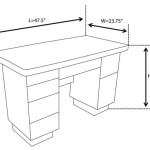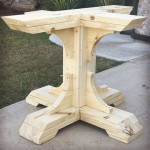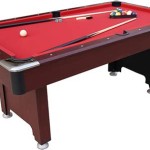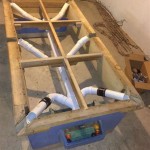Mosaic Kitchen Table Top: A Durable and Beautiful Surface
A mosaic kitchen table top represents a fusion of functional furniture and artistic expression. These tabletops, constructed by arranging small pieces of material, such as glass, tile, stone, or even recycled materials, into a cohesive design, offer a unique aesthetic combined with considerable durability. The creation of a mosaic kitchen table top is a multifaceted process, demanding careful planning, precise execution, and a keen understanding of material properties. The resulting piece is a highly personalized, visually striking, and exceptionally resilient surface suitable for the rigors of daily kitchen use.
The appeal of mosaic kitchen table tops extends beyond their aesthetic qualities. Unlike conventionally manufactured tabletops, each mosaic represents a unique design. The combination of color, texture, and arrangement inherent in the mosaic process ensures that each table is a truly one-of-a-kind piece. Furthermore, the mosaic surface is remarkably robust, capable of withstanding heat, spills, and scratches better than many other common tabletop materials. This durability, coupled with the inherent beauty of the design, makes a mosaic kitchen table top a worthwhile investment for homeowners seeking both functionality and artistic flair.
Understanding the Components of a Mosaic Kitchen Table Top
Constructing a mosaic kitchen table top involves several essential components that contribute to the final product’s overall quality and aesthetic appeal. First, the substrate, often a sturdy piece of plywood or medium-density fiberboard (MDF), provides the foundational support for the mosaic design. The substrate’s dimensions directly influence the size and shape of the finished tabletop. Second, the tesserae, the individual pieces that form the mosaic pattern, are carefully selected based on their color, shape, size, and material. These tesserae can range from traditional ceramic tiles to glass beads, pebbles, or even shards of broken china, offering a wide range of design possibilities. Third, adhesive is used to securely attach the tesserae to the substrate. The choice of adhesive depends on the materials used for both the tesserae and the substrate, ensuring a strong and lasting bond. Finally, grout fills the gaps between the tesserae, providing structural stability and creating a smooth, even surface. The color of the grout can significantly impact the overall aesthetic, either blending seamlessly with the tesserae or providing a contrasting accent.
The selection of each component – substrate, tesserae, adhesive, and grout – requires thoughtful consideration. The substrate must be strong enough to support the weight of the tesserae and the everyday use of the table. The tesserae should be resistant to moisture and temperature fluctuations, particularly if the table will be exposed to heat from hot dishes. The adhesive must be appropriate for the materials being bonded to prevent future delamination. The grout must be durable and stain-resistant to maintain its appearance over time. Failing to carefully consider these factors can compromise the longevity and beauty of the mosaic kitchen table top.
Key Considerations in Designing a Mosaic Kitchen Table Top
The design phase of a mosaic kitchen table top is critical to achieving a visually appealing and functional outcome. The initial step involves determining the overall theme and style of the mosaic. This decision often reflects the homeowner’s personal preferences and the existing décor of the kitchen. The design can range from simple geometric patterns to intricate landscapes or abstract compositions. Color palettes play a significant role in establishing the mood and visual impact of the mosaic. Warm colors, such as reds and oranges, can create a cozy and inviting atmosphere, while cool colors, such as blues and greens, can evoke a sense of calm and tranquility. The size and shape of the tesserae also contribute to the overall aesthetic. Smaller tesserae allow for more detailed and intricate designs, while larger tesserae create a bolder and more graphic effect.
Beyond aesthetics, functionality must also be considered during the design phase. The surface of the mosaic should be relatively smooth and even to provide a comfortable surface for dining and other kitchen activities. Sharp edges or protruding tesserae can be both unsightly and hazardous. The grout lines should be narrow enough to prevent food particles from becoming trapped, but wide enough to allow for thorough cleaning. The design should also be resistant to staining and fading, particularly if the table will be exposed to sunlight or spills. Careful planning and attention to detail during the design phase can ensure that the finished mosaic kitchen table top is both beautiful and practical.
The Construction Process: From Laying Tesserae to Applying Grout
The construction of a mosaic kitchen table top is a meticulous process that requires patience and precision. The initial step involves preparing the substrate by sanding it smooth and applying a sealant to protect it from moisture. A grid pattern may be drawn on the substrate as a guide for laying the tesserae. The adhesive is then applied to a small section of the substrate, and the tesserae are carefully placed according to the design. Spacers may be used to ensure uniform gaps between the tesserae. This process is repeated until the entire surface is covered with tesserae. Once the adhesive has dried completely, the spacers are removed, and any excess adhesive is scraped away.
The next step is grouting the mosaic. The grout is mixed according to the manufacturer’s instructions and applied to the surface, filling the gaps between the tesserae. A rubber float is used to press the grout into the gaps and remove any excess. After the grout has partially dried, a damp sponge is used to clean the surface and reveal the tesserae. This process may need to be repeated several times to remove all traces of grout from the tesserae surface. Once the grout has fully cured, a sealant is applied to protect it from staining and moisture. The final step involves cleaning and polishing the mosaic to reveal its full beauty. The process, though detailed, is crucial for ensuring the longevity and aesthetic appeal of the mosaic table top.
Maintaining the beauty and integrity of a mosaic kitchen table top requires regular care. Regular cleaning with a mild detergent and water is essential for removing food particles and spills. A soft brush or sponge can be used to scrub the grout lines. Avoid using harsh chemicals or abrasive cleaners, as these can damage the tesserae and grout. Sealing the grout every few years can help to prevent staining and moisture damage. Promptly wipe up any spills to prevent them from soaking into the grout. Protecting the table from excessive heat and direct sunlight can also help to prolong its lifespan. With proper care, a mosaic kitchen table top can provide years of enjoyment and add a unique touch of artistry to the kitchen.

Best Mosaic Countertop Ideas For Your Next Project

Blue Agate Coffee Dining Center Table Top Handmade Mosaic Art Kitchen Decor Slab

Tile Kitchen Countertops Ideas For Your Home Design Cafe

Best Mosaic Countertop Ideas For Your Next Project Furniture Projects

4 X2 Black Marble Coffee Dining Table Top Malachite Inlay Decor Mosaic Design

Learn How To Make A Mosaic Table The

Tile Top Table Makeover Updating A With Wood Part 1 Southern Revivals

Gray White Black Kitchen Vanitytop Table Countertop For Hotel Villa Project Paving Stone Tiles Mosaic Fireplace China Granite Countertops Made In Com

Blue Agate Dining Table Top Handmade Mosaic Kitchen Countertop Furniture 48x30

Jeenalavie Dining With Marilyn Portuguese Style Table Top








